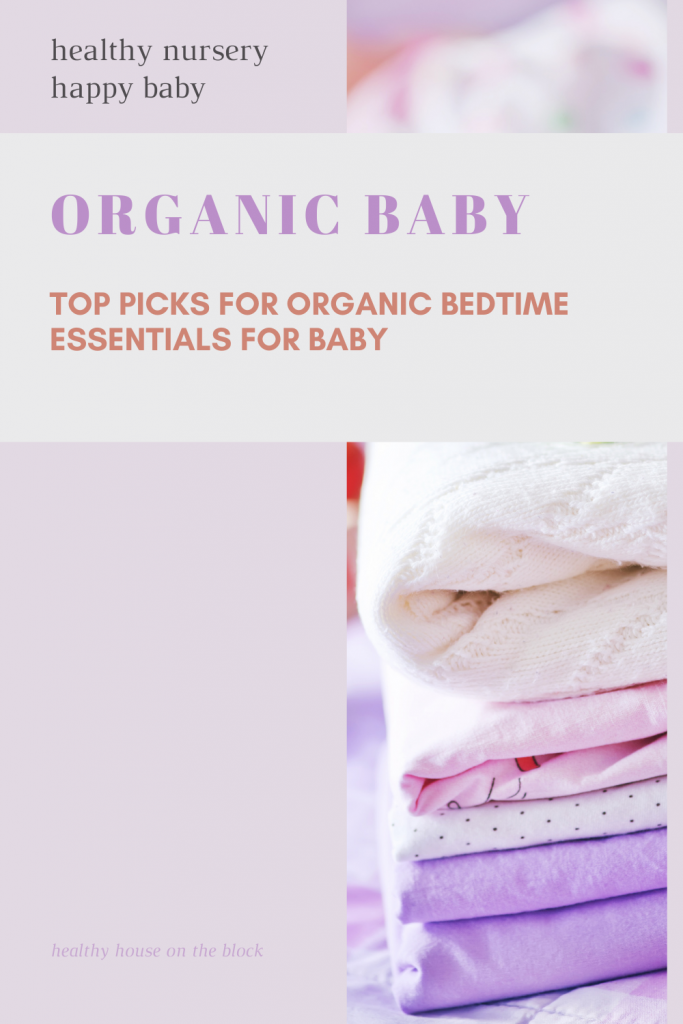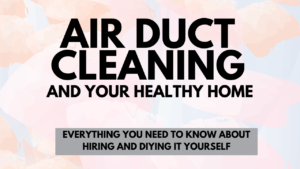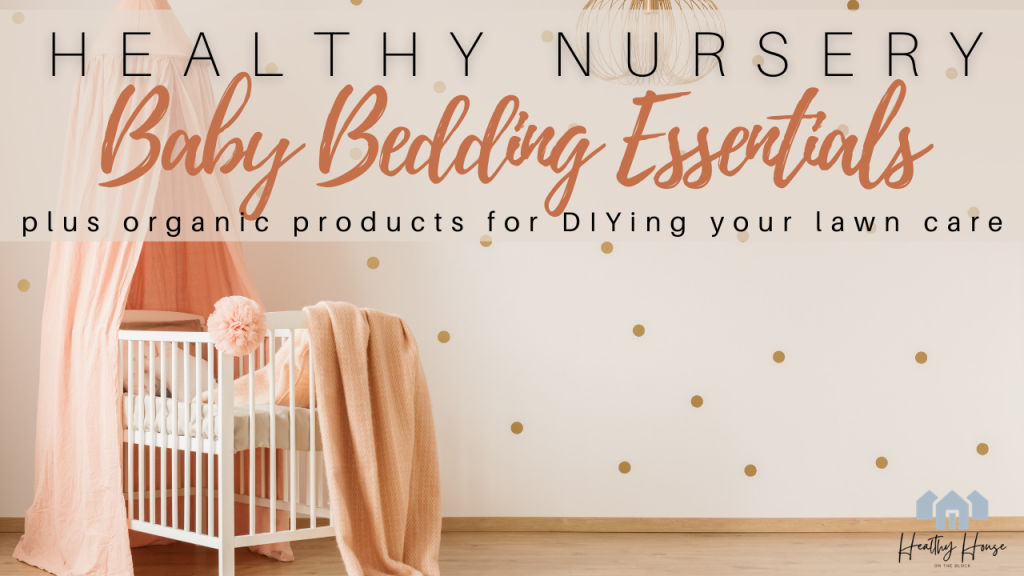
Having a baby at home often means getting very little sleep — especially in the middle of those darn baby sleep regressions. (I think the term “baby sleep regression” is the number one Googled term on my phone in the middle of the night.) And with trying to get more sleep also comes trying different sleep aids — from an organic baby blanket to swaddle sacks to sleeping pods — our family has tried them all between our three kids.
When my oldest daughter was born nine years ago, there were just a few basic baby bedding essentials you could buy. And very few of them were made from organic fabrics. Of course, nine years ago I was in a different place in my life as well. Toxins didn’t seem like a big deal and I was completely unaware that things like pesticides and formaldehyde could be embedded into clothing fibers that I was wearing.
Fast forward nine years that were filled with a WHOLE lot of growth and learning — I see now the vast importance of organic cotton, organic baby blankets and reducing toxins wherever I can for my kids and myself. If you’ve ever pondered the clothing we wear and some of the toxins that they contain, True Cost is a great documentary to get a peek into the clothing industry. Even so, if you watch it or don’t, I’ll always share with you the lessons I learn and studies I find — and this post about baby bedding essentials is no exception.
Coming up I’m sharing with you
- Dangerous toxins in textiles and fabrics
- Organic Baby Blankets & Swaddles
- Essentials List for Baby’s Crib
- Nursery Bedtime Essentials
- Healthy Habits for Baby’s Sleep Environment.
I think it’s important to remember that even though babies are resilient, we still are in charge of protecting their little bodies. Pound for pound, babies and children experience more chemical and toxin exposure than adults. Not only are they just smaller in size, but baby’s rapidly developing systems are more vulnerable than an adult’s fully developed body. And because children and babies are constantly developing, they have a more porous blood-brain barrier. This immature barrier allows more chemical exposures to reach their developing brain. (Body Burden in Newborns)
By protecting them at young ages from chemical toxins wherever we can, we’re protecting their organs that can become “targeted” by chemicals due to their lower levels of chemical binding proteins in their bodies. As a mom, I totally understand that these facts can be overwhelming and scary. I try to use this information to help me make healthier decisions for my kids wherever I can. Cutting out chemical toxins and pesticides from fabrics that sit on your baby’s skin is a great place to get started.
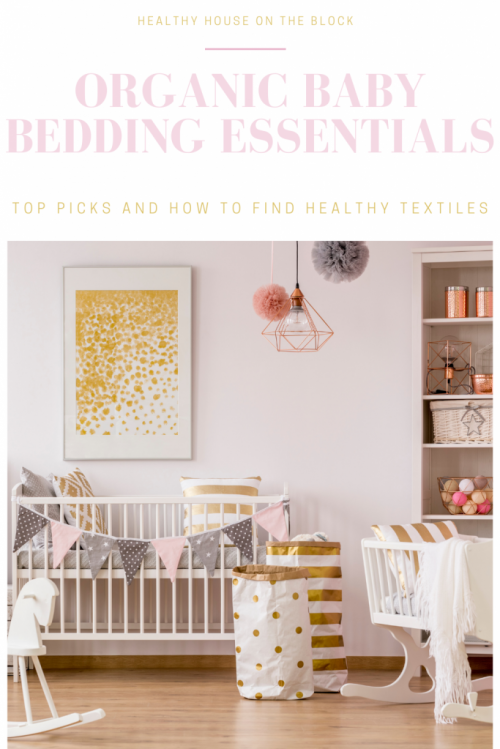
TOXINS IN TEXTILES & FABRICS
It’s tough to imagine that we need to watch our fabrics as closely as we watch our food when it comes to toxins and chemicals. But because cotton is grown just like our food and wool is harvested on too-big farms, pesticides, chemicals and unethical treatment is often used in the first stages of our fabric making.
Our bodies absorb most anything that comes into contact with our skin. Our skin’s pores allow good and bad into our bloodstream, affecting our body and organs in one way or another. In fact, research has shown that perhaps absorbing toxins is even more harmful than digesting them because there are no digestive enzymes that break down toxins when they are absorbed through our skin. (STUDY).
Pesticides: I recently did a post on pesticides and the harm they do to our bodies. But specifically in terms of clothing and textiles that sit on our skin, there’s an even greater risk of absorbing these chemicals as opposed to them being in the air outside.
Pesticides have an extremely long half life — meaning they stick around for LONG periods of time. In fact, that’s basically what they’re designed to do. They’re intended to protect the plant from pests, whether it be insects, fungus or bacteria that will kill the plant. But at what cost? These pesticides stay in cotton and fabrics that eventually get into our closets and homes, exposing us and our families to harmful chemicals.
Organic cotton not only protects yourself and your baby from unwanted pesticide exposure, but it may alleviate many of the environmental issues that have arisen from the overuse of pesticides in conventional cotton production. (STUDY)
Formaldehyde: A known carcinogen to humans, formaldehyde is another additive to our textiles and clothing. It’s often added to ensure that fabrics have a “wrinkle free” appearance and feel. But it can also be added as a preservative early on in the process to prevent mildew and mold while transporting fabrics. (INFORMATION)
Long term effects of formaldehyde has been linked to an increased risk of cancer, damage to the lungs and irritation to the airways and skin. In children and babies it’s much more serious as it often leads to developing asthma and dermatitis. (STUDY) This blog post I did on formaldehyde in the home talks about all the health risks of formaldehyde in greater detail.

Perfluorochemicals: An additive to clothing and textiles to make them more resilient to stains and moisture, perfluorochemicals are made to last and are often known as a “forever chemical” — basically they last forever. This chemical has been shown to impact human health by altering natural hormone production, burdening the immune system and causing birth defects (STUDY). It has also been linked to an increased risk of cancer as well as an increased risk in infertility. FInding organic and natural textiles will ensure that this chemical is not added to your fabrics.
Synthetic Fabrics: Synthetic fabrics are made from materials created by man. And many of these materials contain fine particles of plastics. Often referred to as “microplastics” we allow these toxins on our skin, but more importantly we are actually breathing in particles of these microplastics. Microfibers come from fabrics like polyester, nylon and acrylic clothing. And why do these fabrics get made in the first place? They’re much less expensive than other materials and sometimes things like “moisture wicking” are appealing to the wearer. (INFO)
These plastic fibers in our clothing don’t ever break down. And because of the miniscule size of these particles they can enter our airways and embed themselves deep into our lung tissue. This type of exposure can result in inflammation and damage to cells within the body. (STUDY)
BT Cotton: BT Cotton is a type of cotton that was created and genetically altered to be more resilient to pests, insects and fungus while being grown. Because this type of plant is genetically modified, it actually produces toxins as it grows. (STUDY). Unfortunately, we truly have no idea if our cotton textiles are made from pesticide treated cotton, naturally grown cotton or BT cotton. But it’s safe to assume MOST of our textiles are probably made with BT Cotton as there are over 70 million acres of it growing across the world. (INFO)
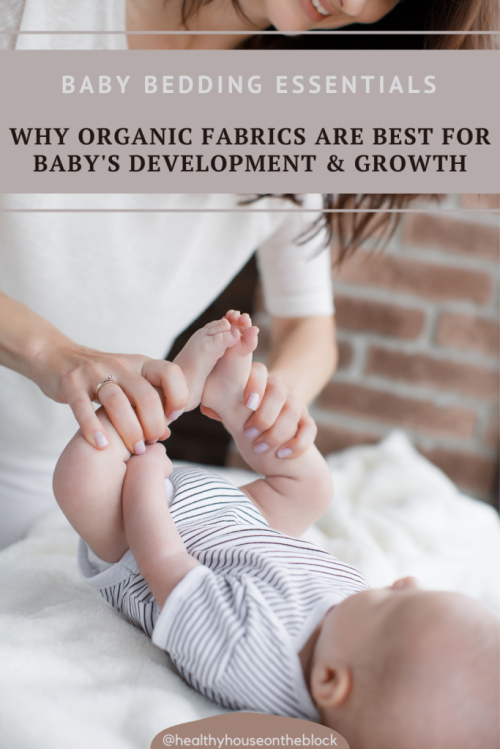
ESSENTIALS LIST FOR BABY’S CRIB
Mattress Protector: Avocado Organic Crib Mattress Protector
Crib Sheets: Honest Company Organic Sheets
ORGANIC BABY BLANKETS & SWADDLES
Swaddle Blankets: Burt’s Bees Organic Muslin
Swaddle Blanket: Rabbit & Bear Organic Swaddle
Velcro Swaddles & Pods: Happiest Baby Sleepea
Velcro Swaddles & Pods: Halo Organic SleepSack & Swaddle
Pajamas: 02Baby
Pajamas: Burt’s Bees
Baby Blanket: BabyMoon Organics Handmade on Etsy
Baby Blanket: Cherubs Blanket Handmade on Etsy
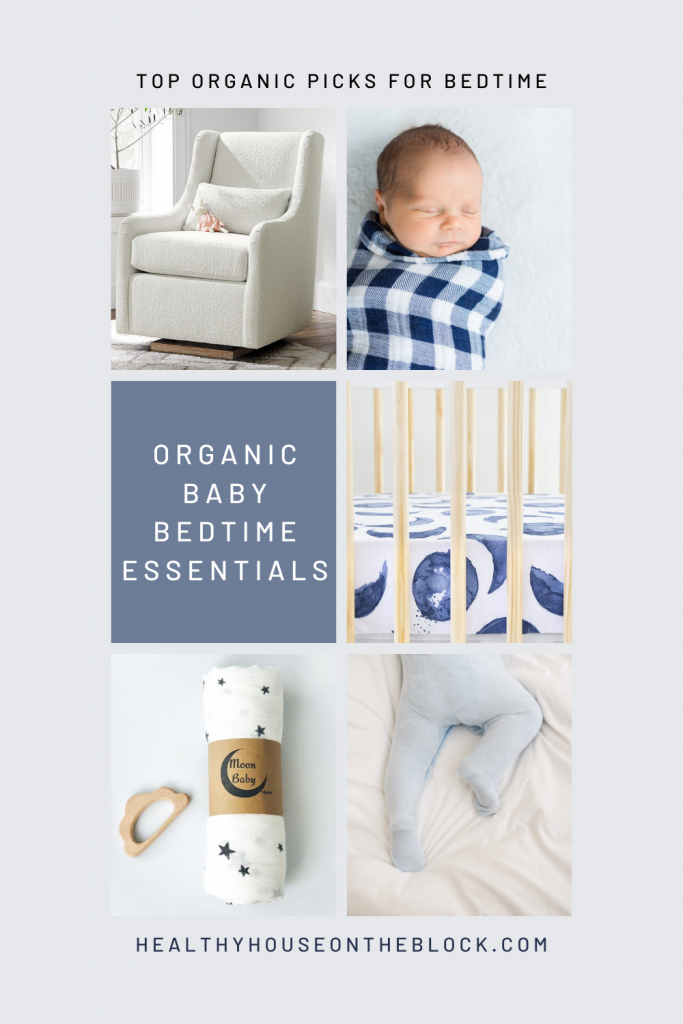
NURSERY BEDTIME ESSENTIALS
Organic Blackout Shades: EarthShade Light Solutions
Low Toxin Rocker: Pottery Barn
Low Toxin Rocker: DaVinci
Favorite Bedtime Books
HEALTHY HABITS FOR BABY’S SLEEP ENVIRONMENT
Dust: Dust is not only made up of dead skin cells and dander (yuck!), but it’s also made up of tiny particles from materials around our home, our products and dirt from outside. All of these tiny particles can contain VOCs, formaldehyde, microplastics and pesticides. We want to keep our baby’s space free from all these toxins. Especially because babies like to put hands and objects in their mouths, they actually consume more house dust than any other age group.
Vacuum: And for those same reasons as I mentioned in the paragraph above about dust, you’ll also want to vacuum frequently. Use a HEPA filter vacuum and don’t forget about corners and hidden spaces.
Move the Monitor: Baby monitors, especially video monitors emit electromagnetic frequencies that can interfere with your baby’s sleep and growth development. While many will tell you to go without a monitor, I’m THAT mom that kept the monitor for WAY too long myself. A healthy option is to move the monitor to the opposite side of the room from your baby, OR, you can use a low emission baby monitor, like Bebcare (LINK) or AngelCare
Climate Control: The perfect temperature and humidity levels make it easier for baby to sleep and it also keeps baby’s environment in a range that doesn’t promote off-gassing at high levels. Try to keep thermostats between 68 and 72 and make sure your indoor humidity levels are right around 40% for a baby’s room. You can use a humidifier to raise it or use some of my moisture reducing habits to lower the humidity levels.

Sleep is SUCH an important part of a baby’s development, but so is a low toxin environment. Switching over to organic baby bedding and organic baby blankets will certainly reduce toxic chemicals that could potentially surround your baby.











